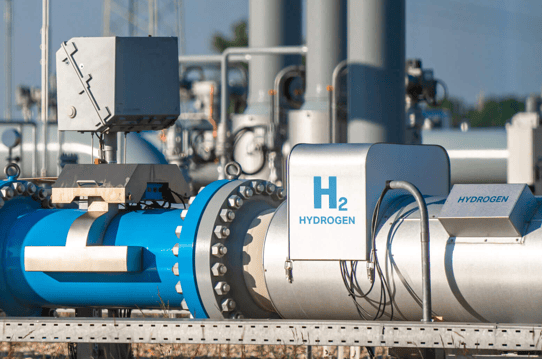By: Lance Looper on September 7th, 2023
Hydrogen Embrittlement 101
Hydrogen embrittlement, sometimes called “metal embrittlement,” is a common problem for hydrogen service, and one that can be prevented by choosing properly designed valves for low-temperature hydrogen service. In this blog, we explain what hydrogen embrittlement is and what can be done to prevent it.

What is hydrogen embrittlement?
Hydrogen embrittlement describes the loss of ductility and reduction of load-bearing capability in metals that have absorbed hydrogen atoms or molecules. After a threshold of absorption has been passed, metal components will crack and fracture at stress levels much less than the rated yield strength of the metal. Simply put, the metal absorbs the hydrogen, which causes it to weaken considerably and shatter or crack. In a liquid hydrogen situation, a leak from embrittled components can lead to fire or explosion.
Hydrogen embrittlement typically occurs in carbon alloy steels, but can also occur in iron, nickel, titanium, cobalt and their alloys. Copper, aluminum and stainless steels are much more resistant to embrittlement. If you looked under a microscope at what’s happening at the molecular level, you’d see that hydrogen forms bubbles along the metal's grain boundaries. Enough bubbles building up will then put pressure on the metal grains, eventually reducing ductility and strength. (Ductility refers to the metal’s plasticity in response to increased strain or shock, causing mild deformations but not immediate fracturing. The more ductility, the more resistant to cracking.)
Prevention through improved metal composition
Hydrogen embrittlement is a process that occurs over time, sometimes taking years to fully compromise a metal. But it’s a problem you don’t want to discover after an accident happens. That’s why it’s important to use the highest-quality components that effectively resist embrittlement. The strongest effects occur at room temperatures, and metals with higher strain rates are more susceptible.
Currently, the best method of producing stainless steel that resists embrittlement is choosing a steel grade with higher nickel content and less carbon, as well as the addition of some titanium, which helps stabilize the microstructure. At least 10% nickel is considered the minimum safe amount for use with hydrogen.
Play it safe with the highest-quality ASME valves
The best way to protect hydrogen systems from failure due to hydrogen embrittlement is to use valves designed to resist embrittlement. Herose ASME Hydrogen Relief Valves are made from specially-designed stainless steel developed to prevent embrittlement issues. ASME-approved and meeting all industry specs, these Herose valves are designed specifically for hydrogen and cryogenic service.
Other key features:
- Available pressures from 40 to 3,265 PSI
- KAG approvals on the way
- Service down to -425F
- Extremely fast delivery times
Shop Herose ASME Hydrogen Relief Valves


